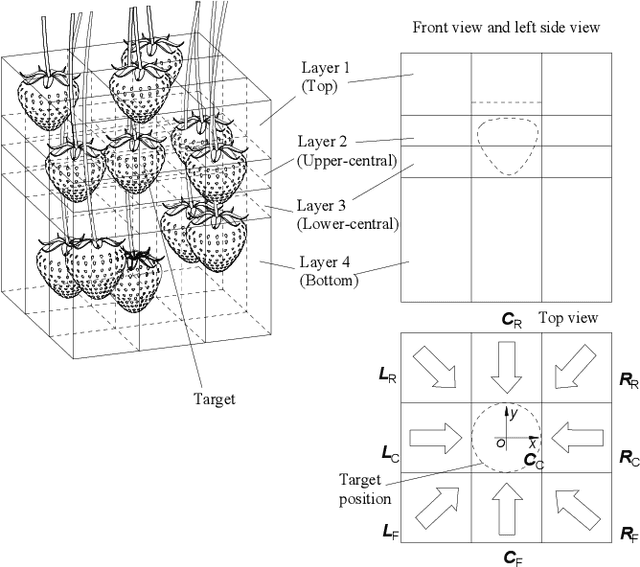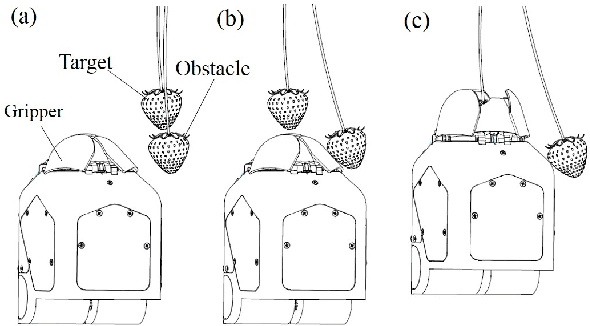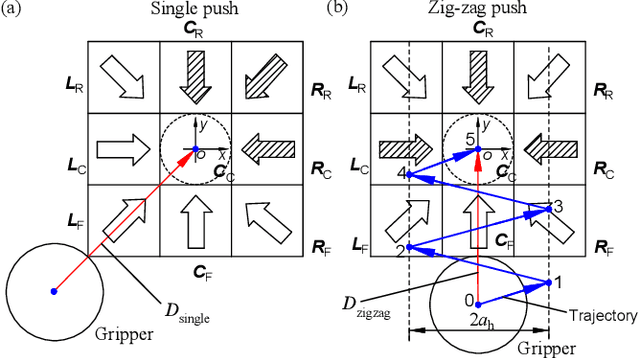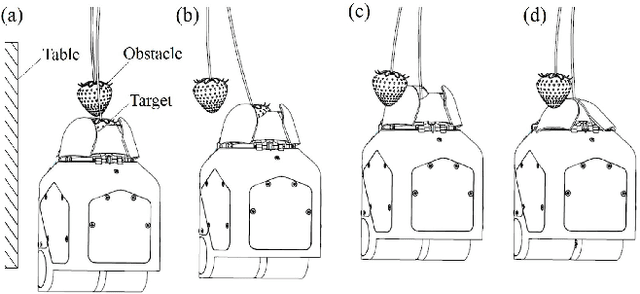Yuanyue Ge
Design and Control of a Novel Six-Degree-of-Freedom Hybrid Robotic Arm
Jul 29, 2024Abstract:Robotic arms are key components in fruit-harvesting robots. In agricultural settings, conventional serial or parallel robotic arms often fall short in meeting the demands for a large workspace, rapid movement, enhanced capability of obstacle avoidance and affordability. This study proposes a novel hybrid six-degree-of-freedom (DoF) robotic arm that combines the advantages of parallel and serial mechanisms. Inspired by yoga, we designed two sliders capable of moving independently along a single rail, acting as two feet. These sliders are interconnected with linkages and a meshed-gear set, allowing the parallel mechanism to lower itself and perform a split to pass under obstacles. This unique feature allows the arm to avoid obstacles such as pipes, tables and beams typically found in greenhouses. Integrated with serially mounted joints, the patented hybrid arm is able to maintain the end's pose even when it moves with a mobile platform, facilitating fruit picking with the optimal pose in dynamic conditions. Moreover, the hybrid arm's workspace is substantially larger, being almost three times the volume of UR3 serial arms and fourteen times that of the ABB IRB parallel arms. Experiments show that the repeatability errors are 0.017 mm, 0.03 mm and 0.109 mm for the two sliders and the arm's end, respectively, providing sufficient precision for agricultural robots.
Push and Drag: An Active Obstacle Separation Method for Fruit Harvesting Robots
Apr 20, 2020



Abstract:Selectively picking a target fruit surrounded by obstacles is one of the major challenges for fruit harvesting robots. Different from traditional obstacle avoidance methods, this paper presents an active obstacle separation strategy that combines push and drag motions. The separation motion and trajectory are generated based on the 3D visual perception of the obstacle information around the target. A linear push is used to clear the obstacles from the area below the target, while a zig-zag push that contains several linear motions is proposed to push aside more dense obstacles. The zig-zag push can generate multi-directional pushes and the side-to-side motion can break the static contact force between the target and obstacles, thus helping the gripper to receive a target in more complex situations. Moreover, we propose a novel drag operation to address the issue of mis-capturing obstacles located above the target, in which the gripper drags the target to a place with fewer obstacles and then pushes back to move the obstacles aside for further detachment. Furthermore, an image processing pipeline consisting of color thresholding, object detection using deep learning and point cloud operation, is developed to implement the proposed method on a harvesting robot. Field tests show that the proposed method can improve the picking performance substantially. This method helps to enable complex clusters of fruits to be harvested with a higher success rate than conventional methods.
 Add to Chrome
Add to Chrome Add to Firefox
Add to Firefox Add to Edge
Add to Edge